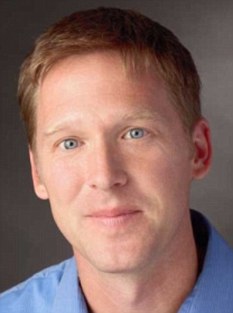One Google Search, One Phone Call
One of the hundreds of thousands who had downloaded the podcast was Rob Schmitz, a reporter based in Shanghai for the public radio show Marketplace , a daily weekday business news program. While in the shower, he finally listened to the TAL/Daisey podcast about a week after the show originally aired. Daisey’s assertions gave the reporter—a veteran of covering factories in China as a freelancer for a few years and since 2010 for Marketplace —pause. Many of Daisey’s claims seemed implausible. But for several weeks, Schmitz had no opportunity to follow up: he and his wife were expecting a baby, who was born on February 17.
Schmitz listened to the segment a second time while he was on paternity leave. He was occupied with his newborn, but keeping an eye on his beat. He called and emailed fellow China correspondents, asking them “Have you heard this? Who is this guy?” [29] Living in China, he observes, is like living in a bubble. Schmitz had never heard of Daisey. He wondered whether the TAL episode was meant to be drama, not truth.
In the monologue, Daisey talked about factory guards with guns. Schmitz had never seen guards carrying guns in China. By law, only military and police were permitted to bear arms. Daisey also mentioned that union members met at a Starbucks coffee shop. For Chinese factory workers earning $15 to $20 a day, Starbucks was too expensive—one cup of Starbucks coffee cost more in China than in the US.
Shortly after his second listen to Daisey’s monologue, Schmitz entered “Cathy,” “Shenzhen” and “translator” into Google. (Daisey used the name “Cathy” with no last name in the monologue, although he had told TAL that her real name was “Anna.”) The first entry that popped up was a translator’s phone number. On February 29, Schmitz set up his equipment to tape the conversation and dialed the number.
Schmitz: I’m looking for somebody in Shenzhen named Cathy—and that’s why I’m calling you—who worked with a gentleman named Mike Daisey. And I’m wondering if you’ve ever worked with a man named Mike Daisey.
Cathy: Yes. He’s from America, right?
Schmitz: Did you work with him?
Cathy: Sure . [30]
Schmitz learned her real name was Li Guifen, but that she used “Cathy Lee” when translating for Westerners. Lee thought Daisey had been researching an article; she was unaware that he performed in the theater, or that she was helping him collect material for the stage. Lee emailed Schmitz Daisey’s itinerary, which included three factory visits—not 10, as Daisey had claimed—plus a few other emails she had saved. Schmitz sent her the link to the podcast so that she could listen to it.
Meanwhile, Schmitz researched Daisey to learn more about his background and his performances. He watched videos on YouTube, perused reviews of his shows and newspaper interviews, and read Daisey’s blog posts. Three hours later, Schmitz boarded a plane bound for Shenzhen to meet Lee in person and get the story. He notified his editors in the US that he was no longer on paternity leave.
Shenzhen . The next day, March 1, Lee and Schmitz retraced Daisey’s itinerary. Schmitz had brought along a transcript of the TALepisode for reference. Lee told him that she listened to the monologue the night before and found much of it incorrect. For example, at the Foxconn gates, Lee and Schmitz had observed guards, but no guns were in sight. In fact, Lee said she had never seen a real gun in her life, except on TV and in the movies. In addition, she had rarely seen underage workers during the 10 years she had been taking businesspeople to visit factories, including Foxconn.
As for the café meeting, Lee could recall only a discussion at a different restaurant with two workers, not 25-30 as Daisey had asserted. Schmitz continued going through the transcript asking Lee to verify each event. Daisey’s encounter with people whose hands were shaking uncontrollably as a result of being poisoned by hexane? She had not witnessed that. Daisey’s meeting with the elderly man with a mangled hand, who apparently saw a working iPad for the first time when Daisey pulled his out of a satchel? That, too, had not happened, said Lee. Ditto the taxi that took an unfinished exit ramp that ended in midair.
Furthermore, Daisey’s chronology didn’t seem to fit, given the considerable distances he would have had to travel in just six days. Lee allowed that on some matters, her memory had dimmed. After all, she had taken Daisey on his tour in June 2010, and her job as translator brought her to the same places repeatedly. But she was sure of these key points. She did not seem mad at Daisey, but disappointed. Schmitz recorded their conversation:
Lee: He’s a writer. So I know what he says, maybe only half of them or less are true. But he’s allowed to do that, right? Because he’s not a journalist.
Schmitz: I don’t know. You’re right. He’s a writer. He’s a writer and an actor.
Lee: Yeah .
Schmitz: However, his play is helping form the opinions of many Americans .
Lee: As a Chinese, I think it’s better if he can tell American people the truth. I hope people know the real China. But he’s a writer, and he exaggerates some things. So I think it’s not so good . [31]
After a day filled with Lee’s revelations and verification, Schmitz boarded a plane back to Shanghai. He would have to tell his editors.
